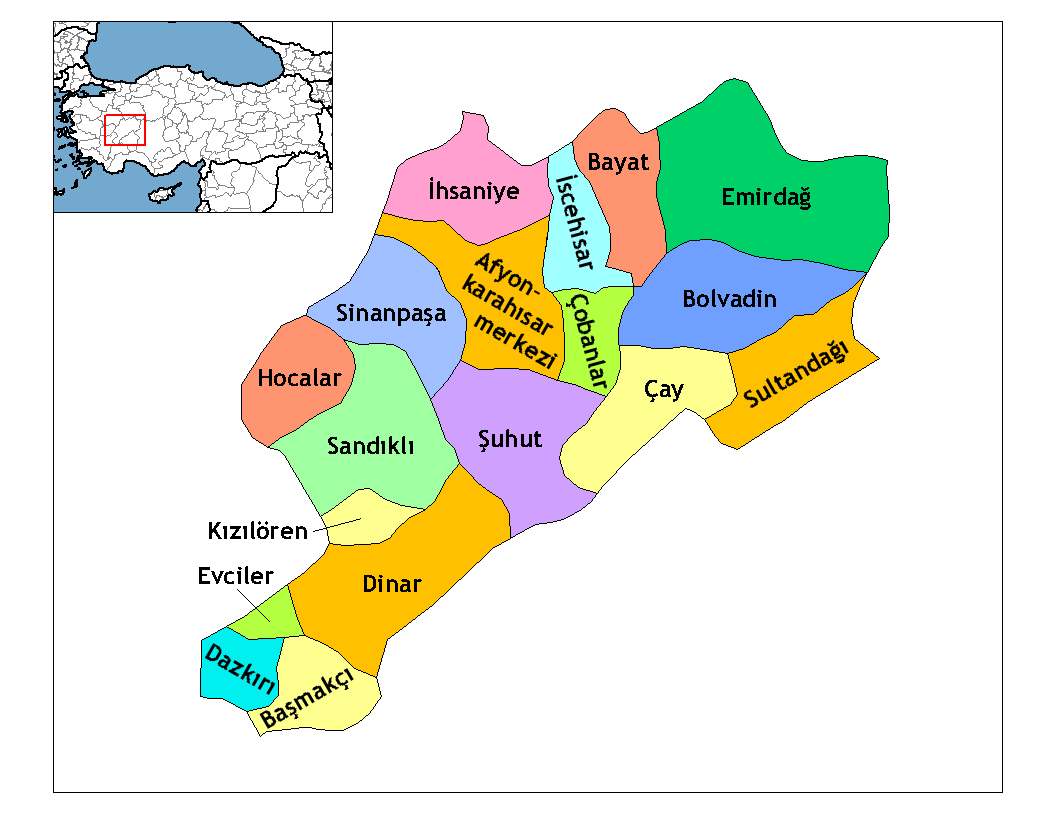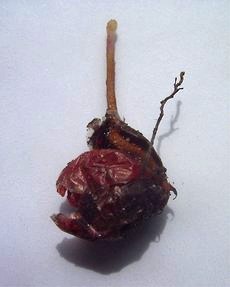|
Sürmene
Sürmene (; , ''Sourmena''; , romanized as ''Sürmena e') is a municipality and district of Trabzon Province, Turkey. Its area is 166 km2, and its population is 25,950 (2022). In ancient times the town of Hyssus or Hyssos () was nearby. The mayor is Rahmi Üstün ( AKP). Sürmene (Humurgan) is situated some east of Trabzon. Known in antiquity also as Susarmia or Augustopolis, it lies on the River Kora ( Manahoz Deresi) and is best known as the place where Xenophon and his Ten Thousand fell sick after eating wild honey, an event which was confirmed by the local people. In the village of Kastil, to the west of Sürmene, stands a ruined medieval castle as well as the impressively restored 18th-century Yakupoğlu Memiş Ağa Konağı mansion. This was formerly the seat of the Yakupoğlu family, who lived here as rulers (derebeys, hence its alternative name of Derebeyli Kale, the Castle of the Derebeys) of the surrounding region relatively free of interference from the Ottoman ... [...More Info...] [...Related Items...] OR: [Wikipedia] [Google] [Baidu] |
Petekli, Sürmene
Petekli is a village in the Sürmene district of the city Trabzon. History The original name of the settlement was Makavla.In the Ottoman land registry of 1530, the settlement is recorded as a village named Makavla, belonging to the Sürmene district of that time. Geography It is 35 km away from the Trabzon city center and 4 km away from the Sürmene district center Population References {{reflist Sürmene Populated places in Trabzon Province ... [...More Info...] [...Related Items...] OR: [Wikipedia] [Google] [Baidu] |
Memiş Agha
Hacı Yakupoğlu Memiş Agha (born 1799 or 1804) was a Turkish landowner. Early life Agha was born in Balıklı village of Sürmene, Turkey, the son of Hajji Yakup Agha. His father was the region's last chief landowner. Migrant In 1814, he was declared guilty of the harassment of the other tribe of Aghas. Yakup Agha ended up moving to Istanbul, and then later emigrated to Romania. At age 15 Memiş Agha took control of the region by resisting the Aghas who took his father. With the approval of the AyanAyan plural form of Ayn in Arabic Language, it means observers, authorized people. landowners, Memiş Agha was elevated by the Ottoman Empire in 1819. By 1824 Ayan lands were turned over to him. In 1864 he was awarded the rank of captain, and became the representative of the military forces in the region. He was entrusted by the Ottoman Empire The Ottoman Empire (), also called the Turkish Empire, was an empire, imperial realm that controlled much of Southeast Europe, ... [...More Info...] [...Related Items...] OR: [Wikipedia] [Google] [Baidu] |
Trabzon Province
Trabzon Province () is a Provinces of Turkey, province and Metropolitan municipalities in Turkey, metropolitan municipality of Turkey on the Black Sea coast. Its area is 4,628 km2, and its population is 818,023 (2022). Located in a strategically important region, Trabzon is one of the oldest trade port cities in Anatolia. Neighbouring provinces are Giresun Province, Giresun to the west, Gümüşhane Province, Gümüşhane to the southwest, Bayburt Province, Bayburt to the southeast and Rize Province, Rize to the east. Aziz Yıldırım was appointed Governor of the province in August 2023. The capital of the province is Trabzon. Districts Trabzon province is divided into 18 Districts of Turkey, districts: Districts along the 114 km coastline (from west to east): Beşikdüzü, Vakfıkebir, Çarşıbaşı, Akçaabat, Ortahisar, Yomra, Arsin, Turkey, Arsin, Araklı, Sürmene and Of, Turkey, Of.Districts inland: Tonya, Turkey, Tonya, Düzköy, Şalpazarı, Maçka, Köprübaş� ... [...More Info...] [...Related Items...] OR: [Wikipedia] [Google] [Baidu] |
Trabzon
Trabzon, historically known as Trebizond, is a city on the Black Sea coast of northeastern Turkey and the capital of Trabzon Province. The city was founded in 756 BC as "Trapezous" by colonists from Miletus. It was added into the Achaemenid Empire by Cyrus the Great and was later part of the independent Kingdom of Pontus that challenged Rome until 68 BC. Thenceforth part of the Roman and later Byzantine Empire, the city was the capital of the Empire of Trebizond, one of the successor states of the Byzantine Empire after the Fourth Crusade in 1204. In 1461 it came under Ottoman rule. During the early modern period, Trabzon, because of the importance of its port, again became a focal point of trade to Persia and the Caucasus. Today Trabzon is the second largest city and port on the Black Sea coast of Turkey with a population of almost 300,000. The urban population of the city is 330,836 (Ortahisar), with a metropolitan population of 822,270. Name The Turkish name of the city ... [...More Info...] [...Related Items...] OR: [Wikipedia] [Google] [Baidu] |
Districts Of Turkey
The Provinces of Turkey, 81 provinces of Turkey are divided into 973 districts (''ilçeler''; sing. ''ilçe''). In the Ottoman Empire and in the early Turkish Republic, the corresponding unit was the ''qadaa, kaza''. Most provinces bear the same name as their respective provincial capital (political), capital districts. However, many urban provinces, designated as greater municipalities, have a center consisting of multiple districts, such as the provincial capital of Ankara Province, Ankara province, Ankara, The City of Ankara, comprising nine separate districts. Additionally three provinces, Kocaeli, Sakarya, and Hatay have their capital district named differently from their province, as İzmit, Adapazarı, and Antakya respectively. A district may cover both rural and urban areas. In many provinces, one district of a province is designated the central district (''merkez ilçe'') from which the district is administered. The central district is administered by an appointed pr ... [...More Info...] [...Related Items...] OR: [Wikipedia] [Google] [Baidu] |
Bottled Water
Bottled water is drinking water (e.g., Water well, well water, distilled water, Reverse osmosis, reverse osmosis water, mineral water, or Spring (hydrology), spring water) packaged in Plastic bottle, plastic or Glass bottle, glass water bottles. Bottled water may be Carbonated water, carbonated or not, with packaging sizes ranging from small single serving bottles to large carboys for water coolers. The consumption of bottled water is influenced by factors such as convenience, taste, perceived safety, and concerns over the quality of municipal tap water. Concerns about the environmental impact of bottled water, including the production and disposal of plastic bottles, have led to calls for more sustainable practices in the industry. History Although vessels to bottle and transport water were part of the earliest human civilizations, bottling water began in the United Kingdom with the first water bottling at the Holy Well, Malvern, Holy Well in 1622. The demand for bottled wat ... [...More Info...] [...Related Items...] OR: [Wikipedia] [Google] [Baidu] |
Mahalle
is an Arabic word variously translated as district, quarter, ward, or neighborhood in many parts of the Arab world, the Balkans, Western Asia, the Indian subcontinent, and nearby nations. History Historically, mahallas were autonomous social institutions built around familial ties and Islamic rituals. Today it is popularly recognised also by non-Muslims as a neighbourhood in large cities and towns. Mahallas lie at the intersection of private family life and the public sphere. Important community-level management functions are performed through mahalle solidarity, such as religious ceremonies, life-cycle rituals, resource management and conflict resolution. It is an official administrative unit in many Middle Eastern countries. The word was brought to the Balkans through Ottoman Turkish ''mahalle'', but it originates in Arabic محلة (''mähallä''), from the root meaning "to settle", "to occupy". In September 2017, a Turkish-based association referred to the historical mahalle ... [...More Info...] [...Related Items...] OR: [Wikipedia] [Google] [Baidu] |
Andromeda Polifolia
''Andromeda polifolia'', common name bog-rosemary, is a species of flowering plant in the heath family Ericaceae, native to northern parts of the Northern Hemisphere. It is the only member of the genus ''Andromeda'', and is only found in bogs in cold peat-accumulating areas. ''Andromeda glaucophylla'' is a synonym of ''A. polifolia'' var. ''latifolia''. Description It is a small shrub growing to (rarely to ) tall with slender stems. The leaves are evergreen, alternately arranged, lanceolate, long and broad, dark green above (purplish in winter) and white beneath with the leaf margins curled under. The flowers are bell-shaped, white to pink, long; flowering is in late spring to early summer. The fruit is a small capsule containing numerous seeds. There are two varieties, treated as distinct species by some botanists: *''Andromeda polifolia'' var. ''polifolia''. Northern Europe and Asia, northwestern North America. *''Andromeda polifolia'' var. ''latifolia'' Aiton 789/ ... [...More Info...] [...Related Items...] OR: [Wikipedia] [Google] [Baidu] |
Drosera
''Drosera'', which is commonly known as the sundews, is one of the largest genus, genera of carnivorous plants, with at least 194 species. 2 volumes. These members of the family Droseraceae lure, capture, and digest insects using stalked mucilage, mucilaginous glands covering their leaf surfaces. The insects are used to supplement the poor mineral nutrition of the soil in which the plants grow. Various species, which vary greatly in size and form, are native to every continent except Antarctica. Charles Darwin performed much of the early research into ''Drosera'', engaging in a long series of experiments with ''Drosera rotundifolia'' which were the first to confirm carnivory in plants. In an 1860 letter, Darwin wrote, “…at the present moment, I care more about ''Drosera'' than the origin of all the species in the world.” Taxonomy The botanical name from the Ancient Greek, Greek ''drosos'' "dew, dewdrops" refer to the glistening drops of mucilage at the tip of the gla ... [...More Info...] [...Related Items...] OR: [Wikipedia] [Google] [Baidu] |
Eriophorum Latifolium
''Eriophorum latifolium'', commonly known as broad-leaved bog-cotton and broad leaved cotton grass Dr. Peter Llewellyn site is a species of belonging to the family . Taxonomy ''Eriophorum latifolium'' was first described by the German pharmacist, botanist, entomologist and physician David Heinrich Hoppe in 1800.Distribution and habitat ''Eriophorum latifolium'' is native to Europe. Some authorities report tha ...[...More Info...] [...Related Items...] OR: [Wikipedia] [Google] [Baidu] |
Eriophorum Angustifolium
''Eriophorum angustifolium'', commonly known as common cottongrass or common cottonsedge, is a species of flowering plant in the sedge family, Cyperaceae. Native to North America, North Asia, and Europe, it grows on peat or acidic soils, in open wetland, heath or moorland. It begins to flower in April or May and, after fertilisation in early summer, the small, unremarkable brown and green flowers develop distinctive white bristle-like seed-heads that resemble tufts of cotton; combined with its ecological suitability to bog, these characteristics give rise to the plant's alternative name, bog cotton. ''Eriophorum angustifolium'' is a hardy, herbaceous, rhizomatous, perennial sedge, able to endure in a variety of environments in the temperate, subarctic and arctic regions of Earth. Unlike '' Gossypium'', the genus from which cotton is derived, the bristles which grow on ''E. angustifolium'' are unsuited to textile manufacturing. Nevertheless, in Northern Europe, they w ... [...More Info...] [...Related Items...] OR: [Wikipedia] [Google] [Baidu] |
Manganese
Manganese is a chemical element; it has Symbol (chemistry), symbol Mn and atomic number 25. It is a hard, brittle, silvery metal, often found in minerals in combination with iron. Manganese was first isolated in the 1770s. It is a transition metal with a multifaceted array of industrial alloy uses, particularly in stainless steels. It improves strength, workability, and resistance to wear. Manganese oxide is used as an oxidising agent, as a rubber additive, and in glass making, fertilisers, and ceramics. Manganese sulfate can be used as a fungicide. Manganese is also an essential human dietary element, important in macronutrient metabolism, bone formation, and free radical defense systems. It is a critical component in dozens of proteins and enzymes. It is found mostly in the bones, but also the liver, kidneys, and brain. In the human brain, the manganese is bound to manganese metalloproteins, most notably glutamine synthetase in astrocytes. Manganese is commonly found in labo ... [...More Info...] [...Related Items...] OR: [Wikipedia] [Google] [Baidu] |





